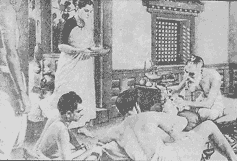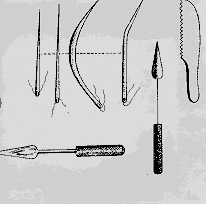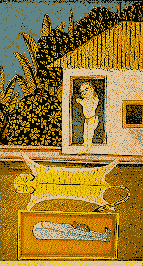By Shri Sudheer Birodkar
Medical Science was one area where surprising advances had been made in ancient India. Specifically these advances were in the areas of plastic surgery, extraction of cataracts, dental surgery, etc.
The Ayurvedic medical tradition also goes back to Vedic times when the Ashwinikumars, who were practitioners of medicine, were given a divine status. Dhanvantari is also referred to as a devata.
Ayurveda-The Science Of Longevity[edit]
This is the indigenous system of medicine in India. Āyurveda literally means 'the science of living' (longevity). Āyu means life and Veda means knowledge. The origins of this system of medicine are lost in the hoary past, and the body of knowledge that comes under the heading Āyurveda constitutes ideas about diseases, diagnosis and cure, which have been accumulated over the past ages.
The feature that distinguishes this system of medicines from other systems like Allopathy and Homeopathy is that it is solely based on herbs and herbal compounds. This it shares in common with the ideas on this area in tribal societies. But what makes Āyurveda, a scientific art of healing is its disassociation from the magical aspect which tribal forms of healing normally have. Hocus pocus and voodoo which is still widely prevalent in rural India could not become a part of Āyurveda as it always retained a physical link between the disease and its cure.
According to Caraka, a noted practitioner of Āyurveda in ancient India, "A physician who fails to enter the body of a patient with the lamp of knowledge and understanding can never treat diseases. He should first study all the factors, including environment, which influence a patient's disease, and then prescribe treatment. It is more important to prevent the occurrence of disease than to seek a cure".
These remarks may appear rudimentary today, but they were made by Caraka, some 20 centuries ago in his famous Āyurvedic treatise Caraka Samahita. The treatise contains many more such remarks which are held in reverence even today. Some of them are in the fields of physiology, etiology and embryology. Caraka was the first physician to present the concept of digestion, metabolism and immunity.
According to him, a body functions because it contains three doṣa or humors, namely, bile, phlegm and wind. These doṣa are produced when dhātus, namely blood, flesh and marrow, act upon the food eaten. For the same quantity of food eaten, one body, however, produces doṣa in an amount different from another body. That is why one body is different from another. For instance, it is more weighty, stronger, more energetic, Further, illness is caused when the balance among the three doṣa in a human body is disturbed. To restore the balance, Caraka prescribed medicinal drugs.
Caraka also knew the fundamentals of genetics. For instance, he knew the factors determining the sex of a child. A genetic defect in a child, like lameness or blindness, he said, was not due to any defect in the mother or the father, but in the ovum or sperm of the parents which is today an accepted fact.
Under the guidance of the ancient physician Atreya, another physician named Agniveṣa had written an encyclopedic treatise in the eighth- century B.C. However, it was only when Caraka revised this treatise that it gained popularity and came to be known as Caraka-samahita. For two millenniums it remained a standard work on the subject and was translated into many foreign languages, including Arabic and Latin.
The medical system of Āyurveda draws heavily from the doctrines developed in the Caraka-Samahita. The main quality which Āyurveda has borrowed from Caraka is its aim of removing the cause for illness and not just curing the disease itself. In Āyurveda there are no such things as instant relievers, pain killers or antibiotics. The herbs used in Āyurvedic remedies do not operate against the body's metabolism, their effect is registered gradually and hence there are minimum side-effects. The constituents of Āyurvedic medicines are largely based on organic matter. The absence of fast registering inorganic compounds which are at times corrosive, contributes to the absence of side-effects from Āyurvedic medicines.
This art of healing had been held in high esteem in ancient India. It was elevated to a divine status and Dhanvantari, the practitioner of this art was deified as the God of Medicine. Even ordinary practitioners of this art - the Ashwinikumars - were given a special status in mythology and folklore. Although very few ancient texts are available today, this method of healing was systematized in early times. The fact that the term Veda was attached to this body of thought testifies to this.
Knowledge of this art was spread among sages, hermits and medicos who roamed from place to place. Those who practiced solely this art were called Vaidyās and they generally belonged to the Brahmin caste. Knowledge of this art was passed from generation to generation. But it remains surprising how this vocation did not obtain the status of a separate caste.
The absence of a caste, wherein this body of ideas could get crystallized and changeless which incidentally could ensure their preservation, along with the absence of a system for regular education and training for practitioners of the art has resulted in its gradual though partial withering over a period of time. The above two lacunae also resulted in the emergence of quackery and made it difficult to distinguish bonafide practitioners from quacks in absence of professional standards. These lacunae have been identified in modern times and recently, organized efforts have been launched to revive and nourish this flagging discipline.
Śāstrakarma-The Art Of Surgery[edit]
The practice of surgery has been recorded in India from around 800 B.C but is probably an even older prosesion as it (Śāstrakarma) is one of the eight branches of Āyurveda. The oldest treatise currently in existence deals with surgery is the Śuśruta-Samahita (Śuśruta's compendium). Śuśruta who lived in Kāśi was one of the many Indian medical practitioners who included Atraya and Caraka.
Śuśruta was an early student of human anatomy. In the Śuśruta Samahita, he has described in detail the study of anatomy with the aid of a dead body. Śuśruta's forte was rhinoplasty (plastic surgery) and ophthalmology (ejection of cataracts). Śuśruta has described surgery under eight topics
- Cedya (excision)
- Lekhya (scarification)
- Vedhya (puncturing)
- Esya (exploration)
- Ahrya (extraction)
- Vsraya (evacuation) and
- Sivya (Suturing).
Ophthalmic Surgery[edit]
Śuśruta specialized in ophthalmic surgery (extraction of Cataracts). A typically operation performed by Śuśruta for removing cataracts (in 800 BC) is described below. "It was a bright morning. The surgeon sat on a bench which was as high as his knees. The patient sat opposite on the ground so that the doctor was at a comfortable height for doing the operation on the patient's eye. After having taken bath and food, that patient had been tied so that he could not move during the operation."
"The doctor warmed the patient's eye with the breath of his mouth. He rubbed the closed eye of the patient with his thumb and then asked the patient to look at his knees. The patient's head was held firmly. The doctor held the lancet between his fore-finger, middle-finger and thumb and introduced it into the patient's eye towards the pupil, half a finger's breadth from the black of the eye and a quarter of a finger's breadth from the outer corner of the eye. He moved the lancet gracefully back and forth and upward. There was a small sound and a drop of water came out.
"The doctor spoke a few words to comfort the patient and moistened the eye with milk. He scratched the pupil with the tip or the lancet, without hurting, and then drove the 'slime' towards the nose. The patient got rid of the 'slime' by drawing it into his nose. It was a matter of joy for the patient that he could see objects through his operated eye and the doctor drew the lancet out slowly. He then laid cotton soaked in fat on the wound and the patient lay still with the operated eye bandaged. It was the patient's left eye and the doctor used his right hand for the operation."
Anatomy[edit]
]]
Śuśruta was not only one of the earliest pioneers in surgery in the world but also one of the earliest ones to study the human anatomy. In his Samahita, he described in detail the study of anatomy with the use of a dead body.
He has described the following in his Samahita, "For these purposes, a perfectly preserved body must be used. It should be the body of a person who is not very old and did not die of poison or severe disease. After the intestine has been cleaned, the body must be wrapped in bast (the inner bark of trees), grass or hemp and placed in cage (for protection against animals). The cage should be placed in a carefully concealed spot in a river with fairly gentle current, and the body left to soften.
"After seven days the body is to be removed from the water and with a brush of grassroots, hair and bamboo it should be brushed off a layer at a time when this is done the eye can observe every large or small outer or inner part of the body, beginning with the skin as each part is laid bare by the brushing."
Plastic Surgery[edit]
Perhaps the greatest contribution of Śuśruta was the operation of rhinoplasty (restoration of a mutilated nose by plastic surgery). The detailed description of the rhinoplasty operation in the Śuśruta Samahita is amazingly meticulous and comprehensive. There is evidence to show that his success in this kind of surgery was very high, which attracted people from all over the country and perhaps even from outside. Cutting off of the nose and ears was one of the common modes of punishment in the early Indian kingdoms.
Śuśruta moved by his intense humane approach to life and equipped with superb surgical skills, did the operation of rhinoplasty with remarkable skill, grace and success. The details of the steps of this operation, as recorded in the Śuśruta Samahita, are amazingly similar to the steps that are followed even to-day in such advanced plastic surgery.
Yoga - Health Of The Body And Mind[edit]
Yoga is a system of exercises for physical and mental nourishment. The tradition of Yoga is a hoary one and has been kept alive by ascetics and hermits. The therapeutic qualities of yoga had special relevance for hermits who roamed from place to place, meditating. We normally see an ascetic (Sadhu) meditating in a Yogic pose. Classical dance also displays many Yogic postures.
The term Yoga is itself derived from the Sanskrit word "yoktra" meaning a yoke. The etymological closeness of the Sanskrit and English words is striking. They have exactly the same meaning. The self-discipline aspect of Yoga is evident in the qualities of holding the breath (in Prānāyama), absolute stiIless (in śavāsana), and celibacy (Brahmacarya). There are innumerable āsanās (poses) in Yoga.
Most of them derive their names from the semblance of the body in those poses to different animals and objects. For instance, there is a Matsyāsana (fish pose), Mayurāsana (peacock pose), Simhāsana (lion pose), Hālāsana (plough pose), etc. But Yoga is a multifarious system, there are various forms of discipline touching different aspects of human life, which are brought under the heading Yoga. We have Hathayoga (bodily exercise), Gnyānayoga or Dhyvnayoga (exercise for the mind and intellect), Karmayoga (discipline in our actions in daily life).
Rishi Patanjali systematically presented the fundamentals of yoga in the treatise Yogasutra (translated as Yoga Aphorisms) in the 2nd century BC. According to him, within the human body there are channels called Nādi and centers called Cakra. If these are tapped, the energy hidden in the body can be released. This energy is called Kunḍalini. The release of Kunḍalini enables the body to acquire many powers which are normally beyond its capability.
Patanjali gives eight stages of Yoga
- Yama (universal moral commandments)
- Niyama (self-purification through discipline)
- āsana (posture)
- Prānāyama (breath-control)
- Pratyāhara (withdrawal of mind from external objects)
- Dhārana (concentration)
- Dhyāna (meditation) and
- Samadhi (state of super-consciousness).
But though the Yogasutras were formulated two thousand years ago, Yoga has been practiced for countless generations. It is only in the last few years that scientists have begun to recognize the powers of yoga. It has now been established through experiments that by practicing Yoga, several ailments can be cured. Tests conducted on Yogis show that they do acquire extraordinary physical powers. For instance, they can live without oxygen for a long time, they can also adjust their metabolism if they have to remain without food for long periods.
Traditionally, Yoga in the strict sense has been practiced by Sādhus and Sanyvsis (sages and hermits) who had renounced material pleasures and roamed the country, meditating and spreading the gospel of truth.
In ancient times the teaching of Yoga was also an integral part of the traditional manner of education as imparted in āśramas and Gurukulas which were presided over by hermits. Though education in these āśramas was open only to a few, the practice of Yoga in its lesser strict versions has been popular among the common people all through the ages. In the present age though not much is being done officially to promote the practice of Yoga in India and abroad, the spiritual movements originating in India which find many adherents in the West are a medium for the spread of Yoga.
Although the āśramas are vanishing, the tradition of Yoga is kept alive today by Gymnasiums. Students of Indian classical dances have to undergo some of Yogic training. But the field where the application of Yoga is being increasingly recognized is physiotherapy.
References[edit]
[1]. Reprinted with permission.



